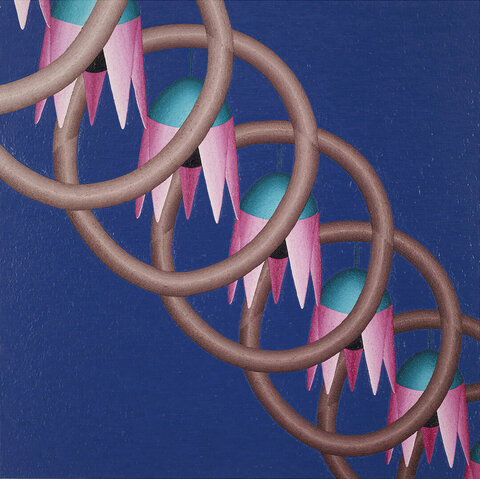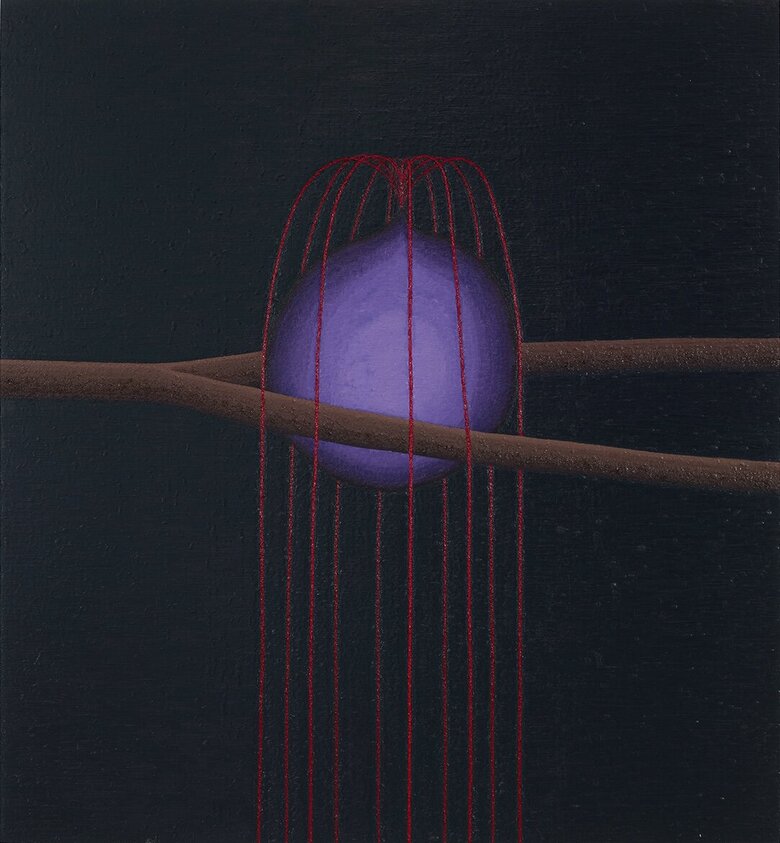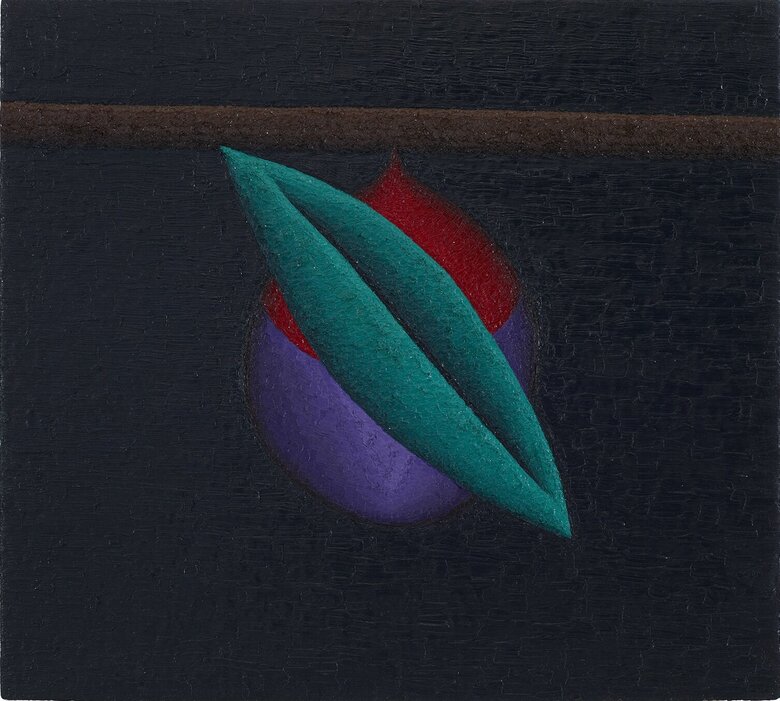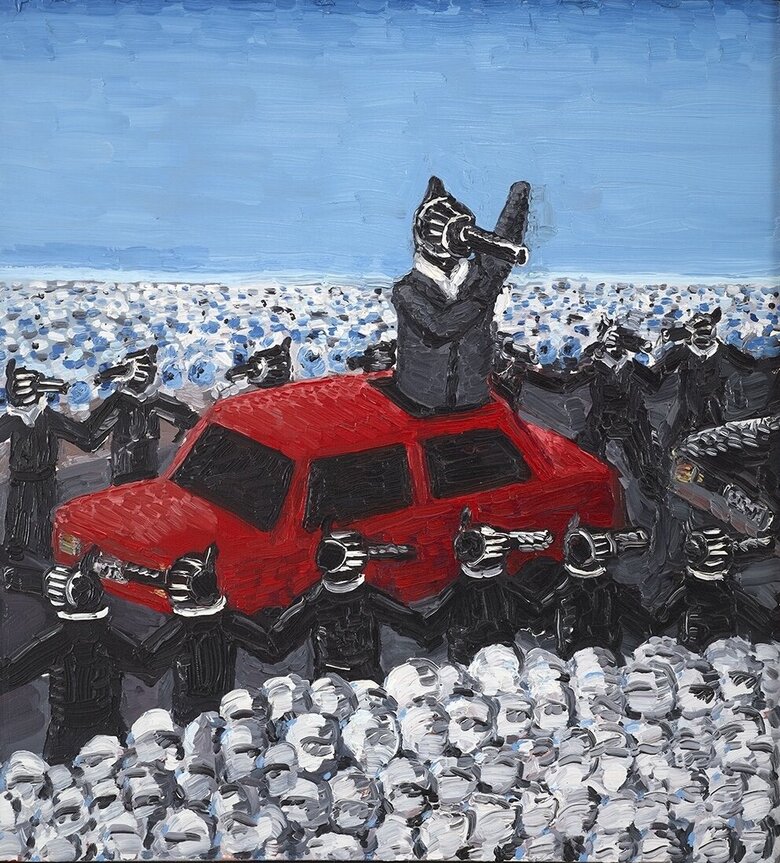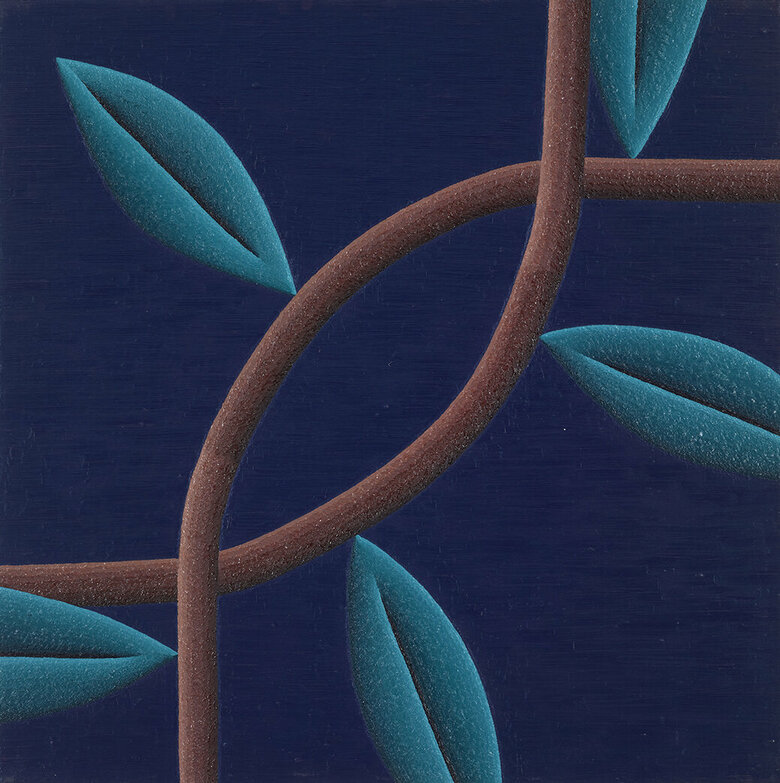Tunisian artist Nadia Ayari’s, 1981, paintings unfold at the intersection of material labor, emotional release, and visual metaphor. Ayari has developed a distinctive painterly language that moves between abstraction, symbolism, and a deep exploration of survival. Her work resists fixed interpretation, yet across her practice, themes of constraint, transformation, and resilience emerge with forceful clarity.
Ayari’s early career was grounded in figuration, a mode she eventually found limiting. As her practice evolved, she began moving into abstraction, initially through works like Fountain II, 2016, which marked the beginning of her abstract period. The painting still bears traces of structure and containment, influenced by earlier representational habits: the painted forms seem to press up against the edges of the canvas, held in place by a sense of compositional control, as if confined within rigid, almost architectural structures. Yet, even in its restraint, the compositions hint at the possibility of letting go, a notion that would come to define her later works.
In more recent paintings such as Orbs I, 2021, Ayari embraces a visual language that is loose, organic, and dreamlike. The rigid linearity of her early abstractions gives way to looping branches, floating orbs, and flowering forms that seem to grow in unpredictable directions. These later works are inspired by the flora and fauna of her hometown in Tunisia, though they are not literal depictions. Instead, Ayari uses imagined natural forms to reflect the condition of survival, how living things adapt, twist, and reach in the face of pressure.
Survival, for Ayari, is not just a theme: it is embedded in the very gestures of her brushwork. The flowers in her paintings do not simply bloom, they stretch, bend, and curve as if responding to unseen forces. Influenced by Surrealism and Posthumanism, Ayari questions the notion of human exceptionalism and autonomy. We do not exist in isolation, she suggests: rather, we are shaped by the systems and environments around us. In this context, her floral protagonists become more than botanical references. They are entities navigating constraint, looping through space, unbound by the expectations of form.
Ayari’s paintings are labor-intensive and tactile. She applies oil paint in countless layered brushstrokes, building surfaces that shimmer with density and depth. From afar, her compositions may appear smooth and uniform, but up close, they reveal a textile-like texture reminiscent of silk thread or embroidery. This careful, meditative process is therapeutic for the artist and evocative for the viewer. The works feel like a stitched, woven, accumulated, visual records of emotional labor.
Across these works, Ayari navigates the delicate balance between fragility and endurance. Her paintings are not static images but living systems: looping, layered, and definitely alive. In their thick surfaces, strange blooms, and bending forms, we glimpse a visual language of perseverance: a space where abstraction becomes a way to endure, and to let go.


